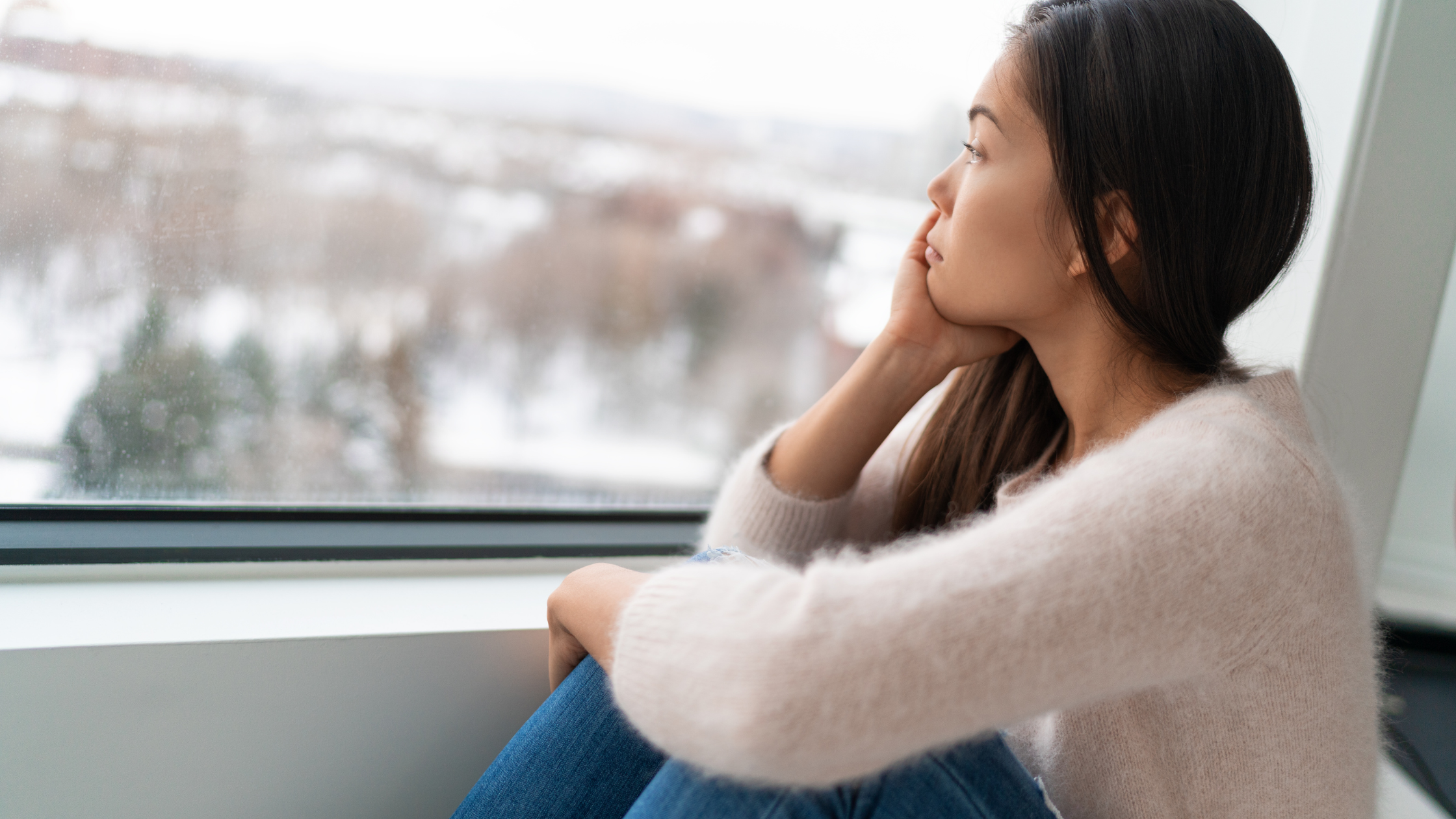
Seasonal affective disorder (SAD) is a depressive mood disorder that affects people only at certain parts of the year. It mostly affects people in the winter months, after daylights savings, when it gets dark very early in the day. The lack of light that most people are exposed to during this part of the year can create feelings of sadness, a lack of motivation, the desire to sleep a lot, and other symptoms synonymous with depression.
The thing that makes SAD unique from depression is that it is not year round. It affects as much as 3% of people inthe US, with lower energy, a lack of concentration and irritability, and sleeping issues. Continue reading to learn more about SAD's effect on sleep.
SAD and Sleep
The misconception about SAD is that if someone is more tired, as is what happens during the winter months, then they will get more sleep. However, the answer is not always to get more sleep with SAD. Lying in bed, under the covers in a dark room is not recommended, even if that may be what is most desired around that time of the year.
A survey distributed by the SleepFoundation.org found that 1250 adults got almost an hour less of sleep in October than September. They also received less sleep than those without a diagnosis of SAD.
The seasons changing produces a change in habits, mood, feelings, etc. By better understanding the why, you will be able to better regulate your own behavior for a more productive winter.
How Light Impacts Seasonal Affective Disorder
Light plays a vital role in the development of SAD. This is perhaps due to the role that light plays in our circadian rhythms. The circadian rhythm is the internal clock for humans. It is dictated by a part of the brain called the suprachiasmatic nucleus. lt is directly influenced by the amount of light that hits the retina, a group of cells in the back of the eye.
The retina is responsible for the secretion of melatonin, a natural hormone that induces sleep and prepares the body for bed. When light hits the back of the eye, this secretion stops. When the eye senses low light, then the secretion begins again.
During the winter months, when the days are the shortest, the eye receives less access to the light. This, in turn, can impact the body's ability to regulate what is day and night, and correctly release the appropriate hormones.
Those diagnosed with SAD feel the most tired during the winter months, especially when the days are the shortest. On the contrary, however, those not diagnosed actually feel the most tired during the summer. This can be increasingly an issue for individuals who live in areas where they can go months without significant daylight, like Alaska.
Geographic Locations where SAD is Most Common
The farther one goes from the equator, the colder and darker their days become. This means that the Northeast and Upper Midwest United States, and Alaska, are most subjected to SAD. Of the respondents living in those regions, 25% had a diagnosis, compared to 15% in the states with the most sunlight. Also, over half of the respondents felt tired in the fall in low-light states, as compared to 42% in sunny states.
How SAD Impacts Sleep
Sleep in those with SAD is affect, bot the quality and quantity. In September, those with SAD slept on average, 7 hours and 7 minutes. By the next month, that number decreased to 6 hours and 14 minutes. Those without SAD averaged 6 hours and 42 minutes in September and 6 hours and 26 minutes in October. Although they are well below the recommended 7 hours of sleep, their sleep loss is much less than those with a SAD diagnosis.
Sleep disorders are very common in those with a SAD diagnosis. Forty percent of people reported a diagnosis of insomnia, with over half having sleep apnea and the others having restless legs syndrome. These statistics almost doubled those that do not have a SAD diagnosis.
Treating SAD
The best way to manage SAD is through therapeutic lifestyle interventions and shifts. A little less than half of the respondents spent their summers in a different location than the winter, compared to just 14% of those without SAD.
Sleep aids are also more common in those with SAD. It was the go-to treatment for up to 58% of respondents. Others also use antidepressants, a different sleep regimen, and others just don't treat it at all. Antidepressants are a good option, but it's important to remember that they take up to 6 weeks for a therapeutic change. So, if you don't see a change right away, it's important to be patient and give them a chance to work.
Staying active and knowing your triggers are going to be two great ways to get your SAD under control. If you can get outside for morning sun and exercise, this can help jumpstart your energy boost for the rest of the day. Exercise is not only counteractive towards depression, but also has a great relationship with sleep.
If you're unable to get the sunlight that you need, you can also use a light box or light therapy. It consists of getting a very bright light for your desk, bedroom, etc., so you can mimic exposure to the sun. This helps boost your cortisol production and reduce the amount of melatonin that is produced. Along with this, taking a vitamin D supplement can also help you with what you may be missing from a lack of sun exposure.
If you are struggling with SAD and want to learn how to improve your sleep habits, then please click the orange button below to take a free online sleep test and talk with one of our sleep health experts.
https://www.sleepfoundation.org/sleep-news/how-much-sleep-do-we-lose-to-seasonal-affective-disorder

